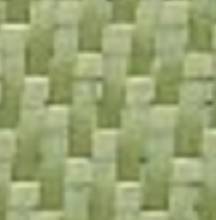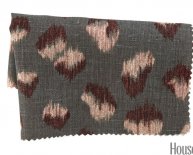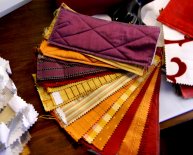
Plain, Twill
Soller Composites
Copyright 2004
All Rights Reserved
I. Introduction
This paper explains the differences between common weave types, weave densities, and when they are best used. The first sections below briefly explain the weave types, followed by a discussion regarding when each weave type is
II. General Weave Definition
Weaves are generally referred & defined by a notation such as: 2X2, 4X4, and 3X1, for example. The first number in this set, for ex. the 3 in 3X1, refers to how many strands are crossed over before going under the perpendicular strands (in a 90 degree weave). The second number refers to how many strands are crossed under before going back over the perpendicular strands (in a 90 degree weave). That is, a 3X1 weave would run: over, over, over, under, over, over, over, under, over, over, over, etc. A 1X1 weave would run: over, under, over, under, over, under, etc.
III. Plain Weave
A Plain weave is defined as a 1X1 weave. Note the weave is over, under, over under, over, under, etc:
IV. Twill Weave
A Twill weave is defined as a set of identical number of weave both under and over. That is, for example: 2X2, 4X4. Below is a good example of a 2X2 twill weave:
V. Harness-Satin Weave
A Harness-Satin, sometimes referred to as: Harness, Satin, or Crowfoot, is defined as any number larger than 1, followed by X, and a larger number. That is, a 3X1 Harness-Satin is referred to as a Harness-Satin 4, H4, or 4HS. A 4X1 Harness-Satin is referred to as a Harness-Satin 5 (5HS or H5), and a 7X1 Harness-Satin is referred to as a Harness-Satin 8, H8, or 8HS. In the H4 weave picture below the weave runs: over, over, over, under, over, over, over, under, etc.
Of course there are always exceptions. It is possible to weave a Harness-Satin so it looks like/similar to a 45 degree twill. Commonly if this is done, it is as 3X1 weave vs 3X1 weave that appears to be fairly ramdom. In the case where the 3X1weave is woven to look like very similar to a twill, the fabric is commonly refered to a 3X1 twill.
To confuse the subject even further, note the black/grey looking 8HS below. Even though it looks simiar to the 45 degree angled look of a twill, an 8HS is never refered to as a 7X1 twill:

VI. Choosing the Correct Weave Type
Each weave type has its advantages and disadvantages. There is virtually no difference in the strength of the fabric based on it weave. Choose the weave based on asthetics, how complex your curves are, and the weight of the fabric needed for your application. That being said, every time each fiber bends over or under another, that very small bend in the fiber can makes "very" tiny strength differences. These differences should generally be ingnored and are only mentioned here for accuracy, not for fabric consideration.
A plain weave, a 1X1 weave, is the tightest weave. Because the weave is tight, it is the least likely to fray at the ends.
A twill weave has that 45 degree, or 3D, "look" to it, which is so often desired. It is much easier to bend around complex curves than a plain weave, because its weave is looser. Therefore, a 4X4 twill will bend around curves better than a 2X2 twill weave. The looser the fabric, the more likely the fabric will fray at the ends and create spaces in the fabric when bent around complex curves. But a loose fabric will fit around complex curves much better than a tighter weave fabric.
A Harness-Satin, bends over complex curves better than either a plain or twill weave. A Harness-Satin almost always has more weaves per inch than a plain or twill weave (defined as “pics”). So a 17picX17pic has more weaves per inch than a 12picX12pic (Don’t [very important] confuse the difference between the weave definition, such as 2X2, with a pic definition, such as 12picX12pic!) So, because a Harness-Satin has a higher pic count, it will hold together a bit better than a twill weave, when handled carefully.
The best 90 degree woven fabric for going around complex curves a Harness-Satin 8 (8HS). A fabric that easy pivots, or can easy change fiber angle will also fit very complex curves. To allow a fabric to change fiber angle easy, it may be necessary to cut or remove the selvage (typically a kevlar or fiberglass thin leno stitch at the very edge of the fabric). Most flat fabric weaves, such as Plain weave, Twills, Harness-Satins, etc. are woven on a machine called a loom. This machine weave at a 90 degree angle. That is, fiber going lengthwise & widthwise.
So, in general, if you don’t have complex curves and don’t care about aesthetics, a plain weave is the best option. If aesthetics are very important, generally a twill weave is selected, but for a sophisticated look a Harness-Stain H7 or H8 is often used. If you have very complex curves, an 8 Harness-Satin is the best choice.
VII. 1K, 3K, 6K, what does it mean?
The K refers to one thousand individual strands of carbon per fiber bundle. Each stand is much smaller than a human hair. So, if you have 12 weaves/inch (pics/inch), you have 12 fiber bundles per inch, and in each fiber bundle of 3K fabric you have 3000 strands of carbon.
A typical 1K fabric is 3.74oz/sq yard; 3K fabric is 5.7oz/sq yrd.
Don't confuse 3Kx3K with 12X12 in a fabric description. The 3K is the fiber size (fiber bundle size), the 12X12 is the number of weaves/inch in each direction.
Thickness and width of carbon fibers:
We are often times asking what the thickness and/or width of 1K, 3K, 6K, 12K, 18K & 24K carbon is. The first thing to understand is that carbon fiber tow in most carbon fabric is not twisted. If it was twisted it would be yarn, untwisted carbon fiber is called "tow". Because of the untwisted nature of tow a 3K tow "bundle" will have 3000 individual carbon fiber stands in it. A 1K tow "bundle" will have 1000 individual tow stands in it, etc.
Understanding carbon tow is untwisted means the individual fibers can lay in any shape within that bundle. That is, if it was twisted, the bundle would be fairly round with a fairly consistent thickness and width. Of course if you crush the bundle the thickness will compress a bit and the width increase a bit, but twisted fiber is nonetheless fairly consist thickness and width.
Untwisted carbon fiber (tow) has no such consistency. All the fiber could lay side-by-side and have the theoretically thickness of 1 stand (typically about 7 micron), they could be bundles together in a round form or (commonly) somewhere in-between these two extremes.
All this being said (and this can and may change based on brand, style and lot):
- it is common for 3K tow to be fairly flat (approx 0.075" wide and approx 0.001" thick)

















